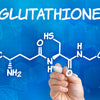Dynamic Duo: peppermint and ginger offer powerful digestive benefits

A key ingredient in Asian, Indian and Caribbean cuisines, ginger imparts its clean, spicy flavor to a wide assortment of drinks, baked goods and recipes. This refreshing condiment is also highly valued in the Ayurvedic and traditional Chinese healing systems for its anti-inflammatory and painkilling properties.
Peppermint, a popular flavoring agent, is commonly used in candies, cookies, breath mints and toothpastes. Like ginger, peppermint has significant medicinal value as well, and a long history in herbal healing. When it comes to promoting digestion and addressing a troubled tummy, it’s hard to beat the combination of these two stomach-soothers, especially when they are brewed into a calming tea.
Ginger is the “O.G.” of herbal remedies for nausea
For centuries, natural healers have advised ginger to treat digestive upsets, including nausea and vomiting from motion sickness, sea sickness and pregnancy. In more recent times, ginger has gained attention for its ability to treat post-surgical nausea and chemotherapy-induced nausea as well. Researchers believe that much of ginger’s therapeutic power derives from its active antioxidant compounds, which include gingerols, shogaols and zingiberone. One of the ways in which ginger seems to support digestion is by promoting the activity of a pair of enzymes, trypsin and pancreatic lipase, which are essential for proper gastrointestinal function. These enzymes also can help the body break up and expel gas that forms in the intestinal tract during digestion.
Does ginger really work?
In a 2020 review of literature published in Nutrients, researchers evaluated a series of randomized controlled trials on the effects of ginger – and reported impressive results.
The authors concluded that many studies showed that ginger had a “positive” effect on the prevention and treatment of chemotherapy-induced nausea and vomiting. (In fact, the use of ginger for nausea has been shown to improve quality of life for cancer patients). And, ginger worked to reduce everyday, “garden-variety” nausea and indigestion as well, with one study even showing that ginger extract was as effective as metoclopramide, a pharmaceutical drug commonly used for heartburn. Unlike metoclopramide - which can cause an irreversible movement disorder known tardive dyskinesia – ginger was found to cause no serious adverse effects. In fact, ginger has even been determined to be safe during pregnancy.
And, that’s not all. Ginger was also found to protect stomach tissue, prevent constipation and promote gastric emptying by 25 percent. The authors reported that ginger even had a small but significant effect on weight loss - helping to reduce body fat mass, percentage of body fat and waist circumference. The impressed researchers characterized ginger’s therapeutic abilities as “very promising.”
Incidentally, this versatile herb not only has anti-inflammatory and analgesic properties, but is also antimicrobial, immune system boosting, anticancer and antidiabetic!
For abdominal cramping, it’s peppermint to the rescue
Peppermint owes much of its stomach-soothing properties to its active constituent, menthol. An important health “superpower” of this beneficial herb is its antispasmodic effect, which allows it to relieve abdominal cramps and stomach pain. (In fact, peppermint is sometimes used to decrease spasms during endoscopies and colonoscopies.) While herbal healers have treasured peppermint since antiquity, new research is confirming this ancient wisdom. In a recent review of literature, scientists praised peppermint’s ability to relax smooth muscles in the digestive tract, relieve abdominal cramps in children, ease heartburn and alleviate postoperative and chemotherapy-induced nausea. Peppermint oil also has been shown to relieve symptoms of irritable bowel syndrome (IBS). Like ginger, peppermint appears to address digestive problems without causing serious adverse effects.
More good news: peppermint is one of the most potent antimicrobials known to botanical medicine. In other words, peppermint “means business,” killing at least 20 different disease-causing bacteria such as E. coli, S. aureus, Salmonella and H. pylori - the pathogen behind many stomach ulcers.
Combine ginger, peppermint for a “one-two punch” against nausea, vomiting and indigestion
You can access the benefits of ginger by blending ginger juice into smoothies, or using fresh sliced ginger root in recipes for beef, chicken, fish, vegetables and salads. But, ginger is probably most effective against nausea when brewed into a tea.
You can buy pre-packaged ginger teabags, but why bother when you can easily steep your own ginger tea? Simply cut a two-inch knob of fresh ginger root into very thin slices, add to hot water, and boil for 10 to 30 minutes (depending on the strength you prefer). Then strain, cool and sip. It’s as easy as that.
Peppermint tea, as well, is a cinch to make. Bring 2 cups of water to a bowl and toss in a handful of fresh peppermint leaves. Cover, and steep for 5 minutes. Then strain and cool.
You can get the “best of both worlds” by brewing a ginger-peppermint tea blend. First steep the ginger tea as usual, then add the peppermint leaves and allow the mixture to steep for another five minutes. For even more antioxidant “punch” and a richer taste, stir in a little raw honey and a splash of lemon or lime juice.
For prolonged or severe stomach pain, of course, consult your qualified integrative healthcare provider. But for routine stomach upsets and queasiness, peppermint and ginger are truly an effective combination to help put tummy trouble on the run.
Sources for this article include:






